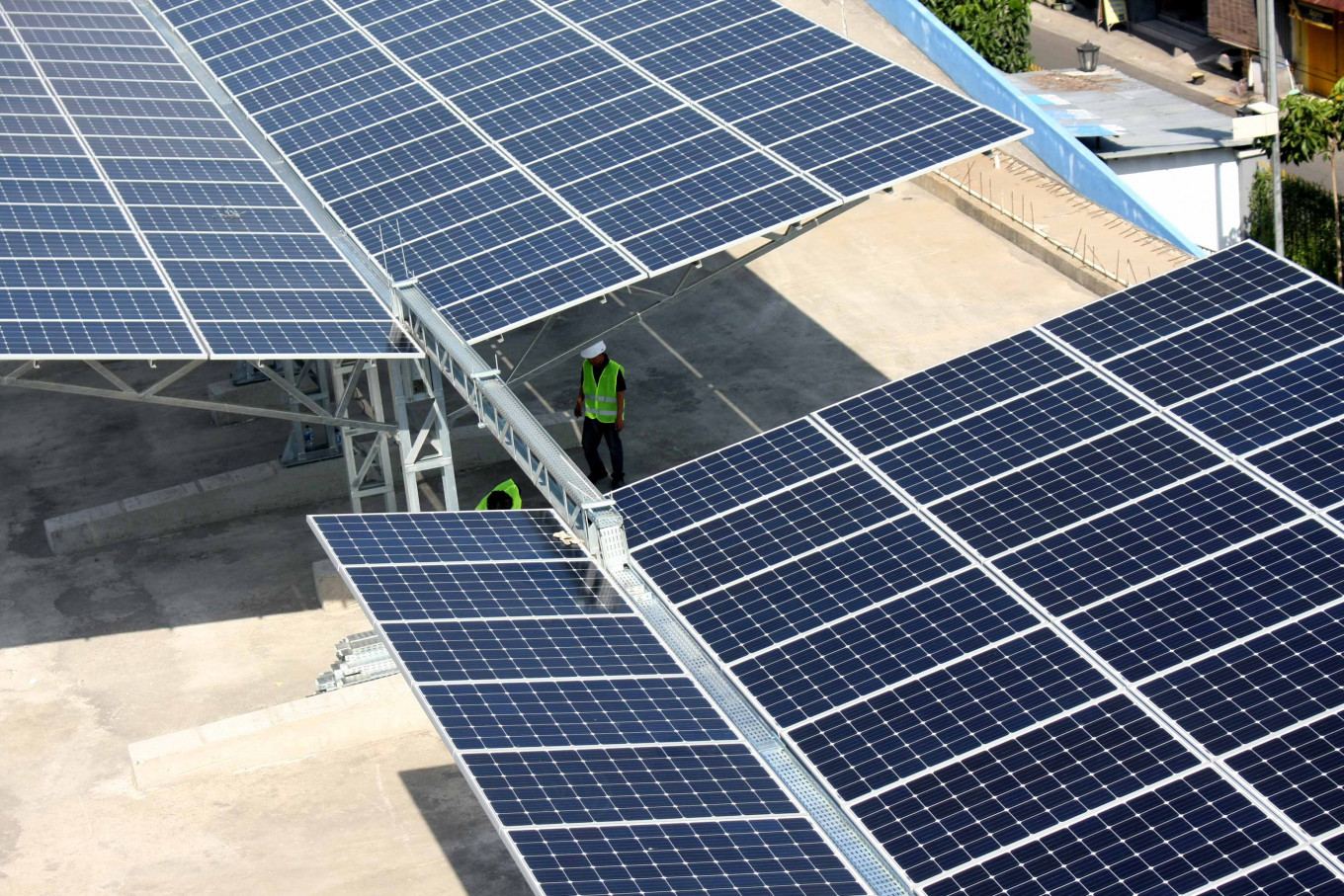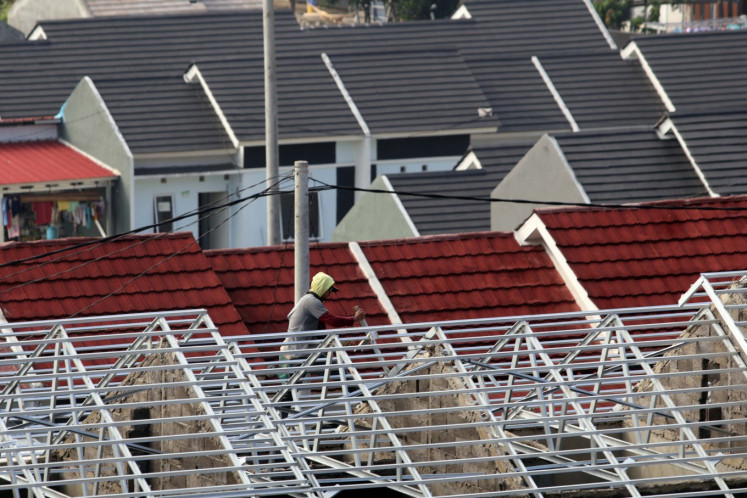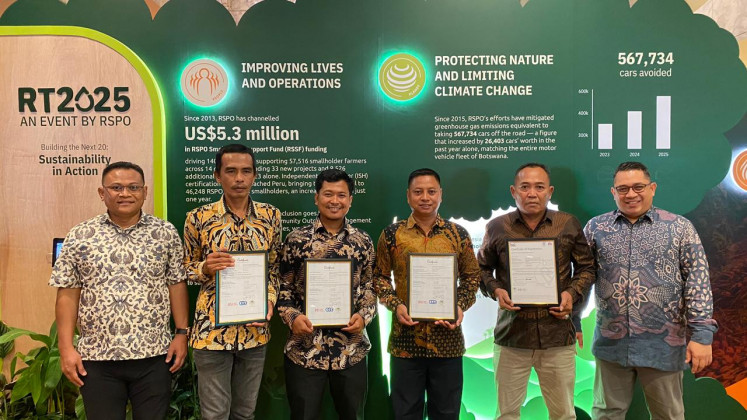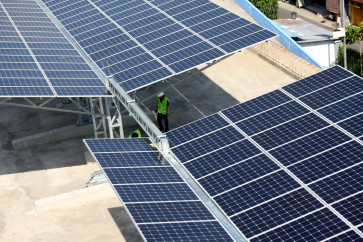Popular Reads
Top Results
Can't find what you're looking for?
View all search resultsPopular Reads
Top Results
Can't find what you're looking for?
View all search resultsMassive speedup in construction only way to meet green power target: Experts
New rules on the pricing of low-carbon electricity are meant to boost investment in renewable energy, but experts warn that will not happen unless the government is on track with its renewable-energy infrastructure procurement, which would require a vast push in construction.
Change text size
Gift Premium Articles
to Anyone
N
ew rules on the pricing of green power are meant to boost investment in renewable energy, but experts say this critically hinges on the government being on track with its energy-infrastructure procurement and construction targets.
Presidential Regulation No. 112/2022 on the acceleration of renewable energy development for electricity supply, in effect since Sept. 13, eliminates feed-in tariffs from the renewable energy-pricing mechanism, prohibits the construction of new coal-fired power plants and provides fiscal incentives to draw investment to new and renewable energy (NRE) projects.
Fabby Tumiwa, chairman of the Indonesian Solar Energy Association (AESI), said improvements in the new regulation included the introduction of a price ceiling (HPT) based on the renewable energy plant’s location.
The new rule replaces the previous regulation set out in Energy and Mineral Resources Ministry Regulation No. 50/2017, which caps the selling price of renewable electricity at 85 percent of the national electricity supply cost (BPP). The BPP is calculated by state-owned electricity firm PLN on the basis of prices from coal-fired power plants.
Now that the long-awaited rule has materialized, Fabby said that, all the government -- or PLN -- had to do was to follow through with their 2021-2030 long-term electricity procurement plan (RUPTL).
“The [AESI] encourages PLN to follow their procurement schedule [in a timely fashion] and increase construction [of renewable plants],” he told The Jakarta Post on Wednesday.
Over the last five years, the power generation capacity of NRE plants nationwide has increased by 1.47 gigawatts (GW), marking an average annual growth rate of 4 percent. This figure is less than half of the 3 GW in annual capacity increase needed for NRE to make up the targeted 23 percent of the national energy mix by 2025, data from the IESR show.



















